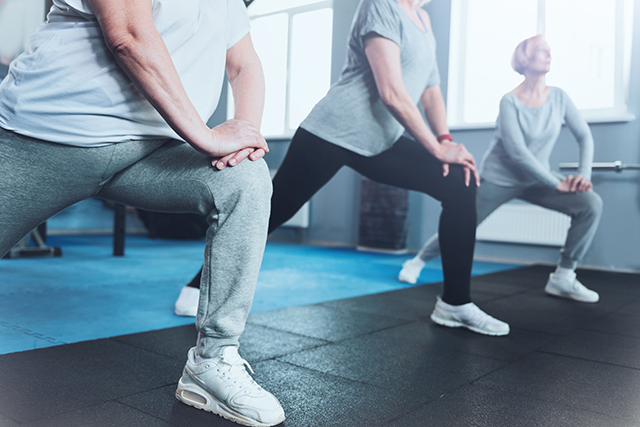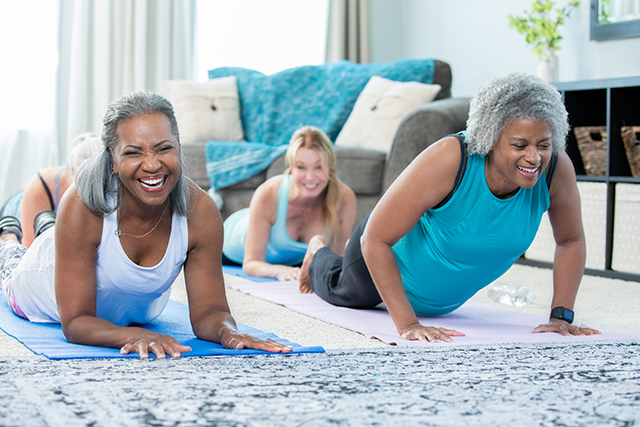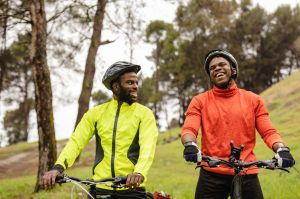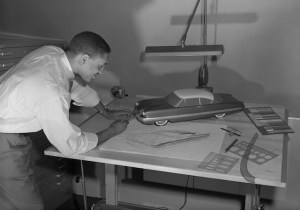Keeping up with physical activity helps to maintain muscle mass, increase bone density and improve balance, posture and flexibility – all important aspects of overall health, especially for older adults.
From improving the ability to perform daily tasks to increasing heart health and controlling arthritis pain to just feeling better, men and women ages 65 and over can gain health benefits from regular physical activity, according to the Centers for Disease Control and Prevention.
Activity doesn’t need to be strenuous to achieve health benefits. Pushups and burpees are great exercises you can do at home, but not everyone is able (or wants) to do high-intensity moves. Don’t risk injury; the more sedentary your lifestyle, the more gradually you should work up to the desired time and intensity of your workouts, starting with 5- to 10-minute intervals.
Try these senior workouts on your own time and in the comfort of your own home. Remember to stay hydrated, don’t forget to stretch, and always consult with a physician before beginning a new physical activity program.
Leg Extensions
Leg exercises maintain your flexibility and strength as you age. Leg extensions will help improve strength and balance, things you need when, say, standing up from a chair or climbing stairs. This exercises builds up your primary leg muscles, bottom and lower back.
- Start in a seated position with your back straight.
- Keep your legs hips-width apart as you gradually lift them. Be sure to avoid locking your knees.
- Exhale and lower your legs back to starting position.

Arm Raises
Whether or not you use weights, repeatedly raising your arms or making a circular motion strengthens your upper body muscles. If you’re new to this motion, you may find your shoulders will be sore at first. This is a sign that you’re building muscle. Follow the recommended steps below for an effective upper-body workout.
- Stand in an upright position with your feet hip-width apart.
- Keep your hands at your sides with your arms straight. If you’re able, hold a dumbbell in each hand with your palms facing down.
- Brace your core and keep your torso stationary. Keep your arms straight and raise them to a shoulder-level position until your arms are parallel to the floor.
- Gradually lower your arms down until you reach the starting position.
Bridges
This is another senior workout that strengthens multiple muscle groups at once. When done correctly, your hamstring, glutes and abdominal muscles will be engaged. The motion will likely feel easier as you get stronger, so advanced users can add weight as a challenge.
- Lie on your back with your knees bent, feet flat on the ground and arms straight at your sides with your palms facing down.
- Pushing through your heels, squeeze your glutes and lift your hips off the floor until your body forms a straight line. Your upper back and shoulders should still be in contact with the ground.
- Pause at the top before lowering back down to the starting position.

Lunges
Think of this leg toning move as an exaggerated walk. Lunges will help with stability on uneven surfaces, as well as balance and mobility. Strengthening your quadriceps is vital for basic movements like standing and walking, according to Elder Gym. Make sure you try this exercise first holding on to a chair with one hand before trying it unaided.
- Stand with arms at sides or on the hips. Keep feet shoulder-width apart.
- Step forward keeping your trunk vertical. Push back up to the starting position. Repeat with each leg 10 times.
Modified Planks
Planks are the perfect abdominal and core exercise for seniors. Since a standard plank position is difficult for most people, there are several variations you can do that target different parts of your core muscles.
- Begin by placing your hands and knees on the ground.
- Walk out your hands a few inches in front of you and lower onto your elbows. You should feel your core contract to help support you.
- Hold for as long as you can, working up to 30 seconds to a minute. You can also use padding (towels, pillows) under your knees if they’re sensitive.
Overhead Press
The overhead press is a compound workout that engages your full body with a focus on your shoulders, upper back and arms, according to Elder Gym. You can do the exercises with both arms at the same time or one at a time. To avoid shoulder pain, perform the overhead press with a narrow grip so you don’t flare your elbows.
- Starting with feet shoulder width apart, weights in hand at chest level, palms forward.
- Raise arms overhead straight up and out together.
- Lower arms to starting position and repeat 10 times.
Calf Raises
Engaging your lower leg muscles with calf exercises like calf raises will give you more power to step forward and make it easier to get up sloping surfaces or uneven terrain.
- Start in a standing position using a chair to balance yourself if necessary.
- Raise up on your toes as high as you comfortably can. Return to the starting position and repeat 10 times.
Chair Squats
Squatting is one of the most popular exercises you can do to strengthen your entire lower body. Rather than using equipment, the squat uses your weight and gravity as the resistance. If you’re new to the motion, start slow and ensure your form is correct to avoid any injury.
- Stand in front of a chair with your feet as far apart as your hips.
- Bend your knees while keeping your shoulders and chest upright.
- Lower your bottom until you sit down.
- Push your body back up to return to a standing position.
Inactivity increases with age; don’t fall into a sedentary lifestyle. If exercise moves are not your style, incorporate physical activities that you enjoy into your daily routine. Walking, gardening and yard work are all good low-impact workouts for seniors. Although you may not be able to move like you used to, just keep moving.
Tell us how you stay active. Share your senior workout tips in the comments below.














